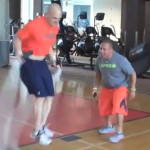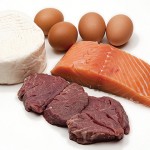Los Angeles, CA — (SBWIRE) — 12/10/2013 — One fitness trend that exploded in 2013 was various forms of High Intensity Interval Training. While there were several variations of this form of exercise, Tabata training was one of the more popular ones. But as trends come and go, how can a person determine if one style of exercise is right for them, or if they should vary their workouts with other styles?With Tabata training, participants are given a fast-paced and exciting way to tone muscles, improve cardiovascular health, and burn calories during a short allotment of time. This sounds fantastic to anyone pressed for time, but in order to get the most out of the workout, it must be done correctly.Tabata is structured in 4 minute blocks composed of eight 20-second intense bursts of speed or strength exercises, then combined with eight 10-second rest periods
Continue reading here:







 For now classes are 6pm and 640pm at 2840 Wildwood st in the Boise Cloggers studio.
Book your class NOW!
click this ==>
For now classes are 6pm and 640pm at 2840 Wildwood st in the Boise Cloggers studio.
Book your class NOW!
click this ==>








